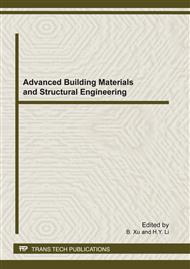p.749
p.753
p.757
p.763
p.768
p.772
p.775
p.779
p.783
Research on Key Technologies of Drought Monitoring and Forecasting Platform Based on GIS
Abstract:
In order to rapidly develop the business of drought monitoring and warning server, some convenient software and systems are developed in many provinces. However, these software systems have some defects in some way. Such as managing and querying a large number of meteorological information, analyzing and processing geographic spatial data. To solve these problems, this paper establishes a public platform of drought monitoring and warning based on GIS. It researches about data transformation, selection of the drought index and other related technologies. The results will benefit the business of Northwest drought prediction and monitoring, and provide a scientific basis for disaster prevention and reduction of some relevant departments.
Info:
Periodical:
Pages:
768-771
Citation:
Online since:
February 2012
Authors:
Keywords:
Price:
Сopyright:
© 2012 Trans Tech Publications Ltd. All Rights Reserved
Share:
Citation:


